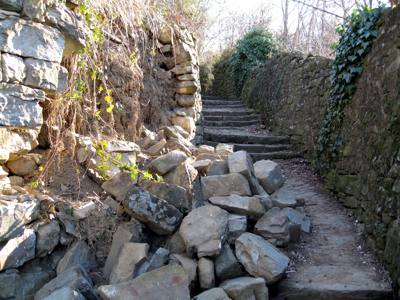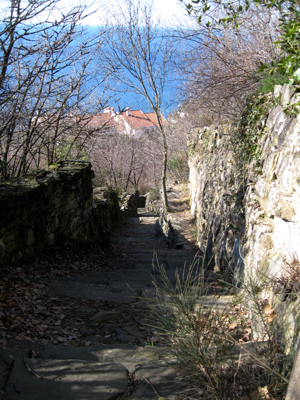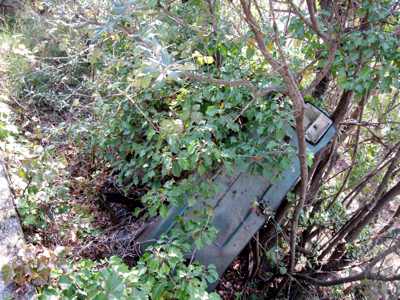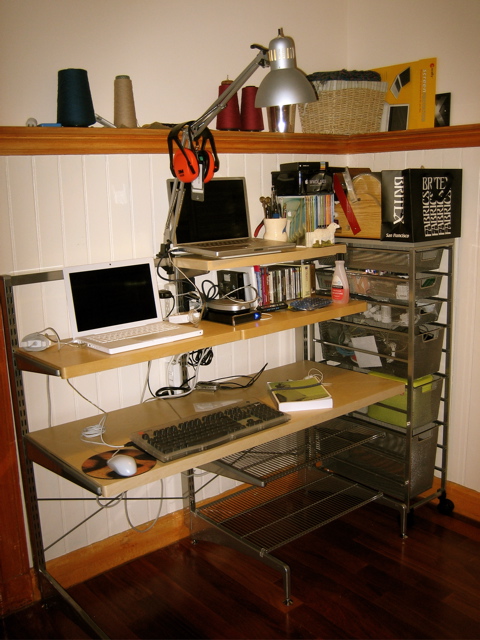We went to the new and improved California Academy of Sciences today, the first day of regular public admission. Yesterday was free and it was a total zoo. But we are members, so this is not a problem. We got there extra early just in case, but it was actually not that bad.
For those who are all about the pictures, here they are.
Someone came out with a Burmese python, so I got to play with the big snake and talk herp so that always makes it a good day. When we finally got in I knew I wanted to see the roof and the rainforest, so with the rainforest exhibit not open until 10:30 I headed up to the roof instead.
The roof looks like a collection of random groundcover plants, pretty much everything was selected to be short. It looks pretty well established and supposedly from here all it will need is maybe the occasional supplemental water when it gets too dry. I know when I tried container gardening my shallow pots dried out really fast, so we’ll see how that goes. But it was damp enough that some mushrooms volunteers have already showed up. There is one patch left unplanted to see who stops by for a visit. It was pretty foggy all day so I don’t know how many people really wanted to go stand on the roof, but I expect I will go back. I’m interested to see how it changes over time.
The big reason I wanted to go opening weekend is that I had heard about the specially formulated glass used in the windows. It’s supposed to be perfectly clear and neutral, so it doesn’t skew the colors of the view outside. I won’t say I couldn’t tell there was glass there, but it was a nice view. I wanted to see it while it was still clean. On a sunny day there will certainly be tons of natural light, although on a typical dreary day there are enormous lights over the rainforest and aquarium tanks to keep everything healthy.
I wandered around randomly exploring the building and taking pictures. I brought my so-so digital camera and used the walking stick as a monopod, one of my favorite features of that particular model. You aren’t going to be using a cable release with it, but it does help in low light. And most exhibits behind glass are not going to work with the flash. This worked surprisingly well, although it’s difficult to position the camera when it’s affixed to a big straight stick. I may borrow Dillo’s little bendy tripod and try it with that.
The big adventure of the day was the rainforest exhibit. First, I had to get in, which was challenge enough. I went to get in line and was offered a timed ticket as a crowd control tactic. But when I arrived back at the appointed hour, all it got me was an invitation to stand in the now-longer line for entry. Just as I got through the containment vestibule (to keep the critters in) Dillo sent me a message asking for the snacks I had in my purse, but once inside I wasn’t coming out until I was done. Not to stand in that line again.
I slowly wandered my way up, looking at all the interesting things, until I got to the canopy exhibit at the very top. There was a huge crowd of people standing around the elevators looking cranky and sweating in the heat. While I was standing there both elevators broke, leaving everyone wondering how we were going to get out of the oppressive heat. (Having lived too long in the southeast, it was warm but hardly a crisis.) Eventually the monitor in charge got permission to let everyone down the emergency exit stairs but this dumped everyone out into the already crowded aquarium rather than the bottom of the rainforest tank where we were supposed to be. It took some hunting to find the way so I could actually see the rest of the exhibit.
I spent some time in the library, which I hadn’t really seen much at the downtown museum. I didn’t know I could get a library card! I of course promptly signed up for one and then looked around at the collection. I sat down to page through Of Pandas and People, a biology textbook written with an Intelligent Design agenda. I’ve heard about it but have been unwilling to buy a copy to see what the fuss was about. The authors are pretty unapologetic in their position that ID is a legitimate contender for explaining the origin of life, claiming that the widely accepted understanding of evolution is merely another theory, among many. Their primary argument is that complex life forms are so well-engineered that they could not possibly have developed incrementally by slow change over time, so there must be an intelligent creator. But it’s not about religion, you know.
I checked out pretty much everything except the planetarium, because I couldn’t get in. There is a lack of physical sciences, which is disappointing but about what I expected. There is a large exhibit on climate change, for some reason collocated with the few dinosaur specimens and other more recently extinct species.
Another big deal about the new green building is the food, not your typical museum dreck but actual recognizable food. It was pretty much like eating at the Ferry Building, in both selection and price, much better than plastic cheese nachos.




